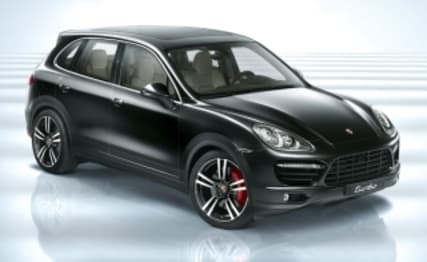
Porsche Cayenne V6 2010 review
- Porsche Cayenne
- Porsche Cayenne 2010
- Porsche Cayenne Reviews
- Porsche Reviews
- Porsche SUV Range
- SUV
- Porsche
- Prestige & Luxury Cars
- Diesel
- Family Cars
All over Europe, governments are tightening their belts – Greece is crumbling, Britain has just announced the most draconian budget in a generation, and even Belgium is rethinking its generous social welfare system.
And in Germany, Porsche is doing the same for the Cayenne SUV, making it leaner and greener … and a little meaner.
The heart of the changes are the upgraded V6 engines: the V6 petrol unit from a platform shared with the Volkswagen Touareg, and the V6 diesel – joined now by a hybrid version that wasn’t available for test this week.
And in place of the twin-clutch PDK autos, there’s a new eight-speed ‘Tiptronic’ automatic transmission geared for fuel economy with the top two slots functioning as overdrive.There’s also been work done to cut down body weight by around 130kg, and the introduction of lower rolling resistance tyres across the range.
Appearance
The designers have also worked to make it more ‘Porsche-like’, which translates as ‘less of a lump’. And while there’s no disguising that it’s an SUV – and one that has grown 1cm wider and taller and nearly 5cm longer – it does have a more refined appearance.
Porsche says they aimed to make it look more compact, and while the Carsguide jury is still out on that result, the refined streamlining of the shape perhaps lets the eye slip more easily over the body. It’s design sleight-of-hand that has trimmed what you might call the visual co-efficient of drag.
Mechanical
Along with the addition of stop-start technology that cuts the engine temporarily when you halt, the economy improvements have been achieved by optimising engine systems with over-run control, reducing weight and revising heat management to warm up the engine faster and reduce friction.
For the 3.6-litre V6 petrol, that means it now develops 220kW of power at 6300rpm and 400Nm of torque at 3000rpm – a rise of about 7kW and 15Nm – while reducing fuel economy by about 20 per cent to 9.9L/100km, with emissions lowering in tandem to 236g/km. It gives 0-100km/h acceleration of 7.8 secs and a top speed of 230km/h.
Although the 3.0litre turbo-diesel’s outputs are unchanged at176kW from 4000-4400rpm and 550Nm of torque from 2000-2250, it has also managed to cut fuel consumption by 20 per cent to 7.4L/100km and emissions to 195g/km. Performance is still respectable, matching the petrol V6’s 0-100km/h time of 7.8 secs, but with a top speed of 218km/h.
The Hybrid S that’s on the way has a supercharged 245kW 3.0-litre V6 coupled with a 34kW electric motor with a combined torque output of 580Nm from 1000 revs. It uses just 8.2 litres/100km, has CO2 emissions of 193 g/km and can be driven for short distances at speeds up to 60km/h on electric power only.
All-wheel drive
Porsche has also worked to lighten the all-wheel drive, which on the petrol V6 is set up to give the rear wheels 85 per cent of the torque in normal driving, redistributing that as needed through the traction management that can send 100 per cent to either axle as needed. However the V6 diesel – and the Hybrid – send 60 per cent to the rear wheels in normal driving, with a switchable centre differential lock changing that to 50/50 for surfaces like rough gravel.
Extra off-roading ability is lent by a switchable suspension adjustment and a host of extra helpers such as the new hill control and improved stability system, and brake assist and force distribution for the 350mm front and 330mm rear discs.
Pricing and range
On sale from July 27, the new range starts with the petrol V6 from $103,500, followed by the V6 diesel at $104,500, the updated 4.8-litre V8 S at $147,900, the S Hybrid at $159,900 and the range-topping Turbo at $239,900.
There are some price rises over the current models, but Porsche Australia spokesman Paul Ellis says that’s outweighed by the extra kit. “There’s more equipment and the price rise is negligible – less than $2000,” Ellis says.
Cayenne accounts for around 40 per cent of local sales, and Ellis sees that continuing. “We’ll sell as many as we can get, and indications are that we’ll sell a lot,” he says.
“The Cayenne is the one Porsche that’s been immune in the financial slump. We noticed slacking off in the sports car segment during the GFC, but the Cayenne’s versatility enabled it to weather the storm. I’d say all our dealers are already holding deposits.”
Fit-out and equipment
The cabin is well laid-out, superbly upholstered and has some great design touches – the lozenge chrome bezels and the similarly angled grab handles on the console sides for a start – but rear visibility is uncomfortable, and you’ll come to depend on the parking assistants.
Which brings us to the wallet-stretchers on the options list, because the V6 models get parking alerts rather than the reversing camera that’s standard on the V8s and Hybrid.
The other down-specs include 18-in wheels rather than 19-in, steel suspension, adaptive headlights but not the higher models’ bi-xenon, and an 11-speaker Bose system – which you can upgrade to a 14-speaker Burmester for $11,950.
Driving
We weren’t big fans of the Cayenne when Porsche first launched it. It seemed so far from their traditional DNA of sporty engineering. Too big, too lumpen – and too damned thirsty.
But we’re liking it a lot more after driving the new one. It looks better, more refined, more dynamic… and it’s more frugal.
While they’re not going to have the grunt of the V8 models, neither of the versions we tested was a slouch. Both petrol and diesel V6 versions take off smartly for what is still quite a big lump of vehicle -- despite weight loss of about 130kg , it still tips the scales at about two tonnes.
But the effortless strength of the diesel makes it our pick. The modest-sounding 176kW is more than compensated by the 550Nm thump of torque – and with just a $1000 premium over the price of the petrol, it’s not going to take you long to recoup the difference. With current fuel prices, it would even up after about 30,000km.
The cars were on the optional 19-in wheels rather than the standard 18-in, but still fitted with low rolling-resistance tyres. But while we found the set-up great for the straight line speed of the smooth autobahns, they were still jittery over the stretches of crumble-edged back roads.
We didn’t get a chance to take either of them off-road, but ventured into the tough terrain of narrow urban streets and some peak-hour jousting – which is where most of the Cayennes will do battle, if truth be told – and were happy to find it steered and negotiated the challenge easily.
Would we buy it in preference to the Volkswagen stable-mate that comes in at about $25,000 less? It would come down to how much that $25,000 impacted on our budget vs the superior Porsche interior fit-out and equipment.
Pricing guides
Range and Specs
| Vehicle | Specs | Price* | |
|---|---|---|---|
| GTS | 4.8L, PULP, 6 SP AUTO | $34,320 – 40,920 | 2010 Porsche Cayenne 2010 GTS Pricing and Specs |
| GTS Porsche Design ED. 3 | 4.8L, PULP, 6 SP AUTO | $42,900 – 49,830 | 2010 Porsche Cayenne 2010 GTS Porsche Design ED. 3 Pricing and Specs |
| (base) | 3.6L, PULP, 6 SP AUTO | $20,130 – 25,520 | 2010 Porsche Cayenne 2010 (base) Pricing and Specs |
| Turbo S | 4.8L, PULP, 6 SP AUTO | $44,330 – 51,590 | 2010 Porsche Cayenne 2010 Turbo S Pricing and Specs |
$28,820
Lowest price, based on third party pricing data













